IR Camera of the Year 2021 Post-Awards Roundtable: Thoughts on the Sony A1, Nikon Z9, Canon R3 and what’s coming next year
posted Wednesday, December 22, 2021 at 11:00 AM EST

As we close out the year, we wanted to gather up the photo crew from the Image Creators Network once again and have another roundtable discussion about all things photo gear, photo tech and what everyone thought about IR's awarding the Sony A1 as our 2021 Camera of the Year. This past year saw the debut of some truly stunning cameras, packed with phenomenal features and capabilities. And when we look to the horizon, next year is likely to bring even more exciting cameras and lenses!
Much like last year's discussion, joining the IR team for today's roundtable is Dave Etchells, IR Founder; Wes Pitts, Editorial Director of Outdoor Photographer; and Dan Havlik, Senior Editor of Digital Photo, Digital Photo Pro and HDVideoPro. This time around, we did more of a live chat between all of us, and what follows is lightly edited transcript of our discussion. So let's break it all down, share our thoughts and have a chat. And after reading through our discussion, please share yours with us in the comments section down below!
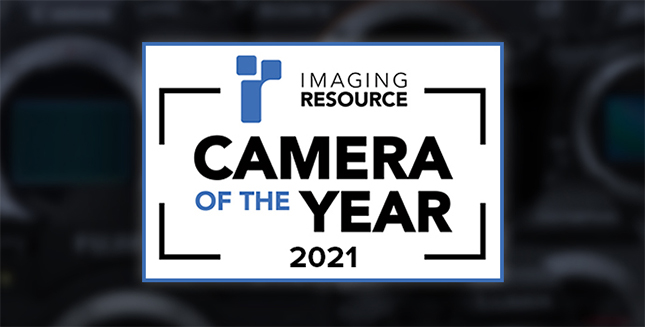
What do we think about the Sony A1 being our Camera of the Year pick?
Wes Pitts, Editorial Director - Outdoor Photographer: We also selected the Sony A1 as our camera of the year for Outdoor Photographer’s annual Editors’ Picks. This camera established a new benchmark particularly for the needs of wildlife and sports photographers with its 30 fps continuous shooting rate and 50-megapixel resolution. The Canon EOS R3 was a clear runner up for us, and the Nikon Z9 would have certainly been in the running, but it was announced too late to be considered for this year’s awards. The Sony A1 edged out the EOS R3 because it’s more than twice the R3’s resolution.

William Brawley, Managing Editor - Imaging Resource: Yeah, the R3 and Z9 would have certainly been contenders for us against the A1 as well had we seen them in time for our awards. Both cameras are looking to be well-spec'ed to challenge the A1. In terms of birding and wildlife, I was extremely impressed with how well the A1's real-time eye-AF worked for birds. The camera was able to detect and lock onto very small birds and do so even in really challenging lighting conditions!
Dan Havlik, Senior Editor - Digital Photo; Digital Photo Pro; HDVideoPro: We didn’t pick a best overall camera for Digital Photo Pro, but the A1 made our 7 Best and it certainly deserves to be the best overall, based on specs alone. The only thing it might have going against it is overall design. I know very few people who “enjoy” shooting with Sony’s A-series cameras, particularly their boxy design, which isn’t very ergonomic. Also, let’s be honest, the user interface is still a mess. But those are rather minor quibbles. In terms of image quality, resolution, speed and performance, the Sony A1 was king in 2021.
Dave Etchells, Founder of Imaging Resource: I agree; the combination of features and performance in the A1 are hard to beat. There isn’t any other camera that combines the level of speed, resolution and AF performance that it has. On the other hand, it’s $6,500. At that price, you could afford two Nikon Z7 IIs and a lens or almost two Canon R5s…
Jeremy Gray, Reviews Editor - Imaging Resource: Yeah, the price is an important factor. If the Sony A1 didn’t deliver exceptional performance across basically every important consideration, the cost would be a tough pill to swallow. Looking back to last year’s Camera of the Year Awards, the Canon EOS R5, and the 2018 Camera of the Year, the Fujiflm X-T3, the A1 is certainly an outlier in terms of price. Of course, the A1’s performance, as Wes outlined, is incredibly impressive. And, not to jump ahead too much, but it’s quite incredible how much of the A1’s best performance has already trickled down to the new Sony A7 IV at a much more palatable price. Granted, the A7 IV isn't anywhere near as fast or as high-res. Nonetheless, price aside, the Sony A1 is a very deserving winner this year.
DE: Dan’s point about ergonomics is a good one; it’s an area where Sony lags badly behind the “traditional” camera makers. I’d like to talk at some point about where the tech is going and how rapidly it’s evolving for everyone. I suspect that things like ergonomics and general user preference are going to play a bigger part in the market over the next few years than they have in the last few.
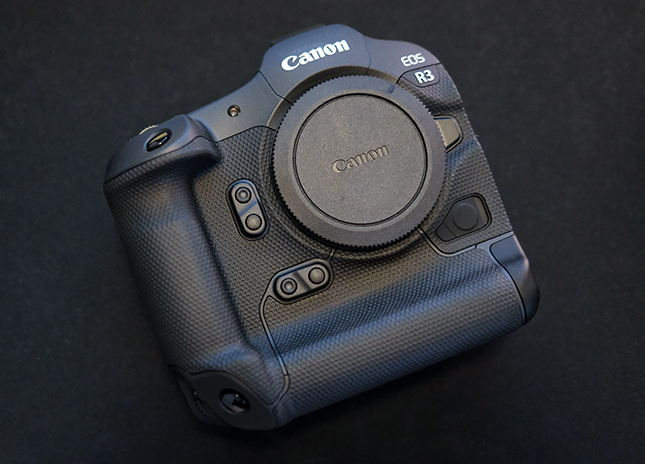
WB: I've not shot with the Z9 yet, but have just started with the R3, and to the point about ergonomics, the A1 is certainly not as comfortable to use as the R3. However, the A1's design and handling has certainly improved compared to previous Alpha models, in my opinion. It's much nicer to hold and use with longer, heavier lenses.

DE: I remember clearly the first time I laid hands on the original Nikon Z7. My immediate reaction was “Ahhhh… This is what a camera should feel like!” Once you get to a certain level of performance, I think ergonomics will be an important factor for many pros. When you’re shooting for hours with a big lens, ergonomics become incredibly important.
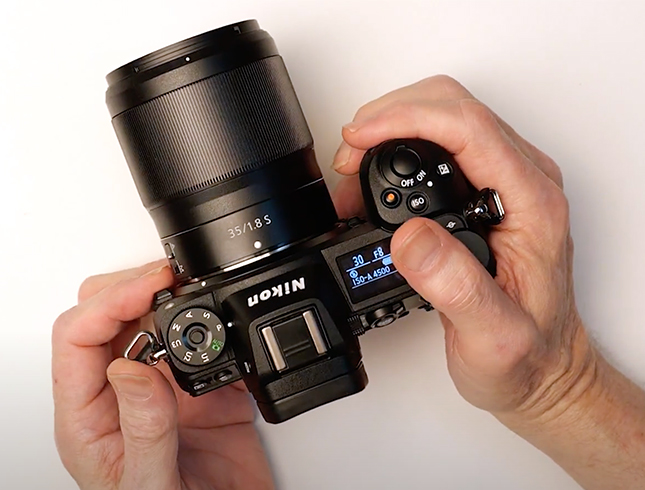
DH: Agree, Dave. The user experience -- ergonomics, button layout, menus -- from Nikon’s top cameras is the best, in my opinion. I haven’t shot with Z9 yet but looking at it and seeing a few hands-on takes, I have a feeling it will continue.
WP: To chime in here on ergonomics, I have a preference for Nikon as well. Part of that may simply be familiarity, as I’ve been shooting with Nikon gear for a long time. Canon’s ergonomics are also quite good. This is one area where I think Sony could improve. Sony cameras feel a bit cramped and small to me, and I’ve never especially liked their settings menus, although they’ve improved quite a bit in recent generations. Admittedly, ergonomics is very subjective and for someone with smaller hands or simply different preferences, Sony’s design might be better.
What is the Sony A1's most impressive feature?
DE: It’s hard to isolate a single feature as what’s most impressive to me is that the A1 scores so highly in multiple areas at the same time. I think it comes down to the combination of resolution and speed. AF is also important of course, but if you take that as being at least somewhat equal across the top manufacturers’ flagship models, the combo of 50MP and 30fps is incredibly impressive.
JG: It is difficult to nail down a single most impressive feature, as what makes the A1 special is the culmination of many technological advancements. Nonetheless, when shooting with the new 70-200mm F2.8 GM II lens, which is perhaps as impressive of a lens as the A1 is a camera, the A1’s autofocus speed jumped out to me. I’ve shot with a lot of expensive, pro-oriented cameras and lenses, but that combination is the first I’ve used that actually took me aback. It was hard to believe just how quickly -- and accurately -- the A1 focused on birds in flight.
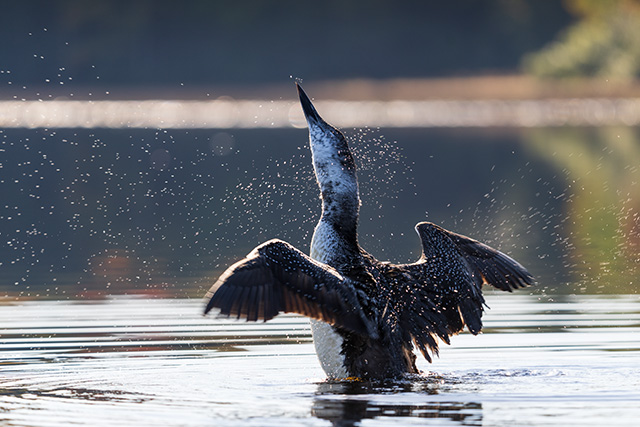
WB: I mentioned above briefly, but the camera's sheer continuous shooting speed aside -- which is way faster than what I need for the type of shooting I do, personally -- I think one of the most impressive features of the A1 is the refined Real-time Eye AF tracking. I rarely had issues with the camera detecting people or animal subjects. The newer Bird Eye AF is amazing, even when trying to focus on birds that were very small in the frame. The camera still managed to find the eye and lock focus.
DE: Yeah, Sony’s led the mirrorless field in AF and particularly Eye-AF for a long time now. I can’t forget the first time I was at a (Sony-sponsored) model shoot and was hopping back and forth between a Sony and another manufacturer’s camera. I’d wanted to see just what it was like, and how much difference Eye-AF made. It was beyond incredible to me. I have little experience working with models, but I was getting vastly more keepers with the Sony camera than the competitor. (That said, I should note that at that point, Eye-AF was very new for Sony, so there were some situations where it failed almost entirely. When it worked though, it was astonishing. Since then they’ve dramatically improved the tech; I don’t think the A1 would have any problems with scenarios that that first model struggled with.)
DH: For me, it comes down to two numbers: 50 at 30, i.e. 50 megapixels at 30 frames per second. I was astounded when I read that spec for the A1 at launch. And neither Canon’s nor Nikon’s offerings have matched it since though the Z9 comes close.
WP: I’ll echo what I’ve said above and what many of us seem to agree on, that 30 fps continuous shooting at 50 megapixels is a very impressive spec. For Outdoor Photographer’s wildlife and sports photographers, this is a powerful combination. But another feature that I haven’t seen get as much attention is the A1’s EVF. With a refresh rate of 240 fps, it’s faster by double than any other EVF that I’m aware of. One of the chief complaints about mirrorless cameras is that the EVFs aren’t nearly as responsive or “natural” as an optical viewfinder. Doubling the refresh rate of the EVF goes a long way in overcoming that objection.
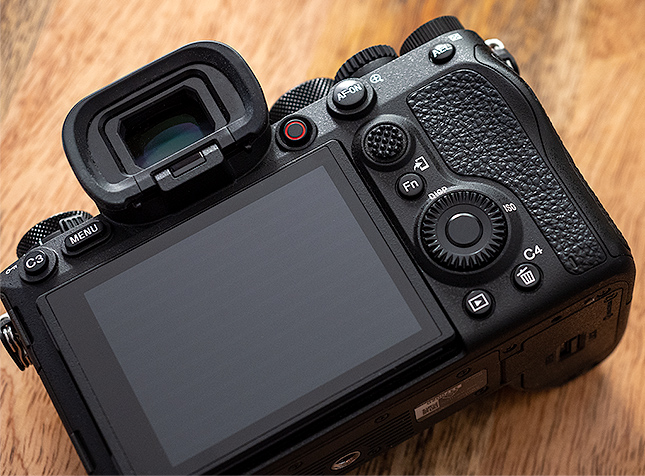
JG: Wes, that’s a really great point about the EVF. It’s such an important component of the A1 specifically and the overall user experience of using a mirrorless camera in general. The A1’s large, sharp and responsive EVF is excellent. It’s so easy to frame moving subjects with the A1. You’re right that the EVF hasn’t garnered as much attention as its other high-level specs, but it certainly deserves more attention and praise.
DE: I’ll second (third?) the point about the EVF. EVF lag and blackout has been a problem since the dawn of the mirrorless age. The A1’s super-fast refresh and low lag are incredibly important when shooting any sort of a moving subject. (Interestingly, a number of people who have shot with the Z9 have commented on its low EVF lag and complete lack of blackout as an exceptional feature. A true zero-blackout viewfinder is huge, in my opinion.)
How does the Sony A1 compare to previous Sony cameras?
WB: Back when we reviewed the Sony A7R IV, we called it "Sony's most versatile camera yet"... but I think it's safe to say that the A1 has taken that crown. The A7R IV, with its 61MP sensor, and excellent overall speed and performance, made it a versatile choice for all sorts of different types of subjects -- though arguably, it wasn't as well-suited for video as some of Sony's other cameras (though it wasn't a slouch in that regard either). But, the A1 just goes so above and beyond with high-resolution image quality and just amazing continuous burst shooting speeds, deep buffer depths, and incredible AF performance -- not to mention, just ridiculous video specs, like 8K 30p video. If you can look beyond the high price tag, the A1 in a way stands alone compared to other Sony cameras.
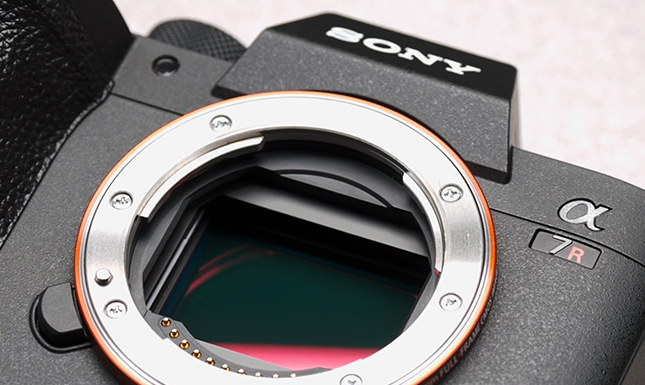
DH: The A1 really is the next step for Sony, and it’s a big one. Anticipating new photo products is a bit of a guessing game -- “Well, the last one had such and such resolution, so this one will have a bit more resolution” -- but, with the A1, I feel that Sony took all of our guesses about what could be coming next and put it in one camera. They really planted a flag with the A1 and the fact that it came so early in the year, in the midst of a global pandemic, was sort of shocking. Bravo to them.
WP: When the Sony A9 was released, we wondered, “What more do you want from a camera?” At the time, a full-frame camera with 24-megapixel resolution that could shoot continuously at 20 fps was exceptional, and it was hard to imagine typical photo situations where you would need something faster, even for sports or fast moving wildlife. At the time, we assumed that iterations of the A9-series would be Sony’s flagship line for a long time to come. The A1 surprised us, beating the A9 (and A9 II) in both respects, at double the resolution and 1.5x the speed.
Is the Sony A7 IV an A1 'lite' or is it something else?
DE: I dunno, it’s certainly “lite” relative to the A1 in many areas, but I think that the bottom line is that it’s a fundamentally different camera. It’s not just a little slower, it’s much slower. It has the same processor and AF system, but … not quite. I haven’t seen any official specs on the difference, but by all accounts (including Sony’s own), the AF isn’t in the same category as that of the A1. (Even with the same processor chip, the sensor scanning the image at one-third the rate of the A1 means that the A7IV is only going to get one-third as many “looks” at the subject.) It’s also only 33MP vs 50MP, although if you look at it in terms of linear resolution it’s only a factor of 23%. Overall, it just seems like an entirely different camera to me, aimed at a very different market.

WB: The A7 IV is certainly a more broadly appealing camera than the A1, not only because of its price. The 33MP sensor offers a nice bump in resolution, compared to the previous A7 III, and by borrowing many of the features and capabilities of the A1's autofocusing system, i think the A7 IV can do well for many photographers who don't need 50MP, or 30fps, or simply can't or don't want to shell out $6,500 for the A1. It doesn't perform as well as A1, and I think that's expected, but the A7 IV is very nicely spec'ed and very capable for many similar subjects that an A1-user might tackle.
DH: It’s really about price, isn’t it?
WB: That's my thinking too.
DH: Let’s put it this way, $4,000 is a lot of money to most people, so when you’re talking about a camera like the A7 IV and it’s $2,500 price tag vs the A1 and it’s $6,500 price tag, that’s a serious jump. So I don’t know if I’d call the A7 IV a “lite” version of the A1. They’re almost from two totally different spectrums. By the same token, I could see the A7 IV serving as a kind of gateway camera to the A1. Once people get in, they’re inevitably going to want to upgrade. But at the point, we may be talking about an A2 or even A3, because they’ll get a lot of use out of the A7 IV.
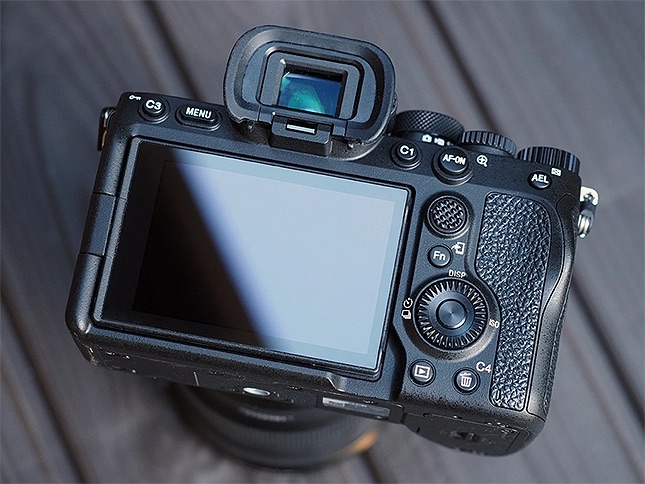
JG: I think you guys are right to say that the A1 and the A7 IV are aimed at an entirely different market. That said, I think that the A7 IV does a really good job at offering users some of the better features that the Alpha system on the whole has to offer. You have an impressive 33MP sensor, access to a very impressive library of lenses, Sony's latest ergonomics and menus, and nearly all of the AF and video bells and whistles. So no, the A7 IV isn’t an A1 ‘lite,’ but it’s a very interesting blend of performance and price. This could be a bad metaphor, but I think about the A1 like the top-end luxury car in a manufacturer’s lineup. Everyone wants to look at it, and ‘test drive’ it, but it ultimately doesn’t make sense for everyone to buy it. The A7 IV is the more practical choice for many enthusiasts. It’s like a mid-range performance vehicle. It gives you a taste of what the flagship model has to offer without breaking the bank. And at the end of the day, that mid-range model ends up fulfilling most needs and doing a great job. The A7 IV isn’t an A1 ‘lite,’ but it’s not a compromise either. The cameras are impressive in different ways.
Are there any other cameras this year that you think could have, or should have, won Camera of the Year?
DH: The Nikon Z9, had it been released a few months earlier, could have won but it’s not really available yet so all we can say is: looks good on paper and in pictures, videos, etc. I do have to say that it’s the camera I’m most excited about. Even though Nikon released some info about the Z9 earlier in the year, I think most of us were a bit skeptical. Sony really started things off with a bang in 2021 with the A1 and then there was so much hype over the Canon R3 around the Olympics that, by the fall, I had somewhat forgotten about the Z9. But after my first press briefing on the Z9, I was blown away by its potential. The tide could be turning for Nikon…we’ll see.

DE: Yeah, Dan, I agree about your level of excitement over the Z9. I was equally blown away when I was first briefed on it, and since then, interviews and discussions with photographers who’ve actually shot with it have only increased my enthusiasm for it. It seems like a true breakthrough camera for Nikon, that’s going to raise the bar for the industry as a whole. We won’t actually know until we’ve been able to shoot with it (hopefully side by side with an A1), but at this point, my bet is that its AF is going to be a step ahead of that on the A1.
JG: As soon as Nikon announced the development of the Z9 and then started teasing the camera, I was really hoping that it would make the deadline for this year’s COTY. Alas, it wasn’t meant to be. But looking instead at cameras that did make the deadline, the Nikon Z7 II, which missed last year’s deadline, is a really compelling camera. It’s not as impressive as the A1 in terms of speed or performance, but the Z7 II produces fantastic image quality and I love the Z7 II’s ergonomics and design. It’s also priced at just under $3,000. That’s not cheap, by any stretch, but the Z7 II is a lot of camera for the money. For photographers that don’t demand 20-30fps RAW shooting, the Z7 II is a similarly impressive camera, all things considered.
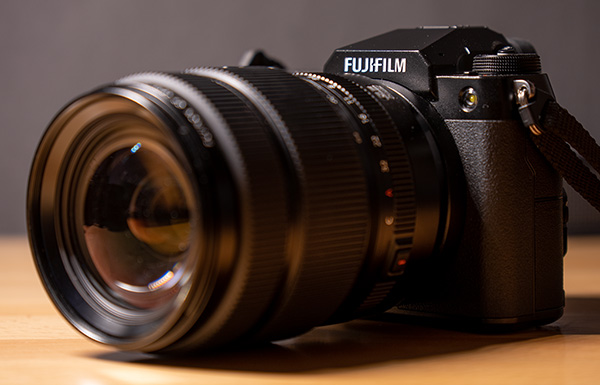
Speaking of value, while not nearly as practical a choice, the Fujifilm GFX system had a fantastic year with the addition of not one, but two surprisingly compact medium-format cameras, the GFX 50S II ($4,000) and the GFX 100S ($6,000). $6,000 is a lot of money, but the GFX 100S has a 102MP large-format image sensor, in-body image stabilization, phase-detection autofocus and 4K video chops in a body that is about the same size as a Nikon D850 or Panasonic S1R.
Looking ahead, will the Nikon Z9 be able to best the Sony A1? Where does the Canon R3 fit in?
JG: The Nikon Z9 certainly ticks a lot of critical boxes. It offers basically the same resolution as the A1 and it features a stacked sensor for a promised fast readout speed. The Z9’s autofocus system brings back Nikon’s lauded 3D tracking for the first time in a mirrorless camera. And the Z9 promises a truly blackout-free shooting experience. Let’s just assume that the Z9 delivers on all Nikon’s lofty -- although achievable -- promises. If the Z9 does what Nikon says it will do, then it truly goes head-to-head with the A1 and bests it in a few ways. Some people have focused on the Z9 shooting RAW images at ‘only’ 20 frames per second, rather than the 30 fps of the A1. While 30fps seems a lot higher than 20fps, in practice, it’ll be interesting to see what sort of difference this amounts to. Of course, the Z9 can shoot full-res JPEG images at 30fps, which will appeal to many sports photographers. On the other hand, the Canon R3 doesn’t feature nearly as much resolving power as either the A1 or the Z9, so it’s not quite in the same discussion as the A1 and Z9.
WP: The Nikon Z9 is definitely a strong competitor to the Sony A1. It’s worth noting for action photography that the Z9 promises an insane 120 fps continuous shooting rate at a reduced resolution of 11 megapixels, which is still a very usable resolution for a lot of purposes. For perspective, we used to print 5-megapixel images in Outdoor Photographer when that was the digital camera standard way back when. The Nikon D3 -- Nikon’s first full-frame DSLR -- was an incredibly exciting camera when it was released in 2007, and it was 12 megapixels and maxed out at 9 fps. So 11MP resolution at 120 fps is pretty awesome…though it could be a memory card and post-processing nightmare if you aren’t careful.
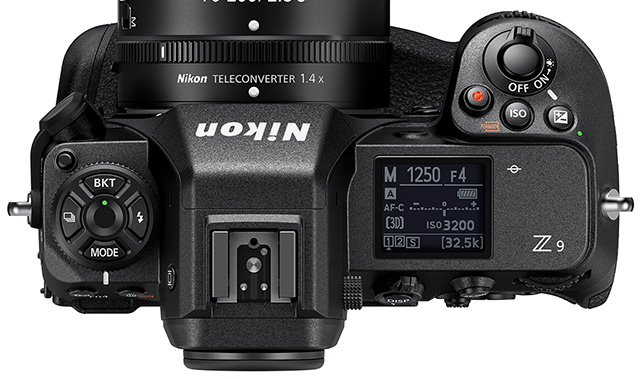
DE: Yeah, Wes, I was thinking the same thing but you beat me to it. In these days of 50MP cameras, people tend to dismiss “only” 11MP, but as you say, it’s more than adequate for many, many purposes. Back in the day, Sports Illustrated ran 6MP images in double-truck spreads, and no one was complaining. (And yeah too, I remember the D3’s launch, and how blown away we all were by it.) The difference between 20 and 30fps is insignificant for literally anything I do, but I agree 100% that it’s an important distinction for wildlife and some sports photography. Beyond 30fps, going to 40 or even 50fps isn’t that big an increment. Jumping to 120fps is a whole other ballgame, though, and is going to open up a whole world of new opportunities.
WB: Oh yeah, the Z9's 11MP at 120fps sounds incredible, and it's certainly high-res enough for many purposes. For sports and press photographers, high-resolution is nowhere near a key priority. Capturing that fleeting moment and then being able to transmit those images are key. That's one of the reasons that Canon cited during the R3 briefing as to why they used a lower-resolution sensor than the R5, for instance. They were finding that some of their pro sports photographers shooting the R5 used it in lower-resolution modes because they simply didn't need the 45MP resolution.
DE: Yeah, good point, William. For a lot of sports or photojournalism shooters, higher resolution is a burden, not a benefit. Some people have been dismissive of the Z9’s 20fps maximum speed at full resolution, but its 11MP 120fps mode will leapfrog the others. I’m far from a pro sports shooter myself, but I don’t see people avoiding the Z9 as being too slow for their uses. (Plus, the fact that the 11MP mode has a crop factor of 1.5x will mean added reach for long telephoto lenses.)
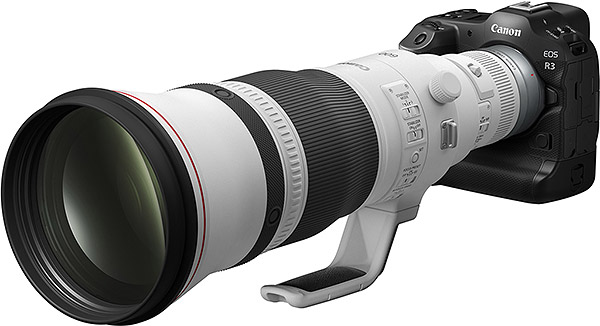
WP: As for where the Canon EOS R3 fits in, I think of it as more a competitor to the Nikon Z6 II or Sony A7 IV, although it has advantages over both. I will not be shocked if we soon learn about an EOS R1 that more closely resembles or surpasses the Sony A1.
WB: Oh that's an interesting point, Wes, and an interesting comparison against the Z6 II. I was not thinking of it as a competitor to that camera, but yeah, it's a 24MP full-frame camera much like the Z6 II and somewhat like the 33MP A7 IV. Although it's significantly more expensive than either of those two cameras; and faster-shooting, too. Plus more pro-focused features, like built-in ethernet and other file-transfer capabilities. But yeah, it's also good to remember that Canon does not consider the EOS R3 as their "flagship" camera. The 1D X Mark III still sits at the top. We're bound to see an "R1" at some point in the future, I'm sure.
DH: Since we are “looking ahead,” I don’t think Canon is done with just the R3 at the top. Of course, I’m hardly the only one who has speculated about this but knowing the way Canon operates -- slowly and steadily -- I wouldn’t be surprised to see one or even two new “flagship” cameras in the next year with the R3, which is really a sports and photojournalism camera, sitting just below or, more accurately, off to the side in its own niche.
DE: For sure, their true flagships have always had a “1” designation. They’re clearly leaving room for an EOS R1 at some point :-)
What cameras, lenses, or photo technologies are we looking forward to, or hoping to see get announced next year?
JG: I’m looking forward to us getting hands-on time with the Nikon Z9, of course. But honestly, I think new lenses get the creative juices flowing more than new cameras, and there are some exciting ones on the horizon. Nikon’s Z lens roadmap has the upcoming 100-400mm lens on it, and they just announced the development of the 800mm F6.3 S-line super-telephoto prime lens. Wildlife and sports photographers must be salivating at the prospect of pairing those lenses with a Z7 II or Z9 camera.
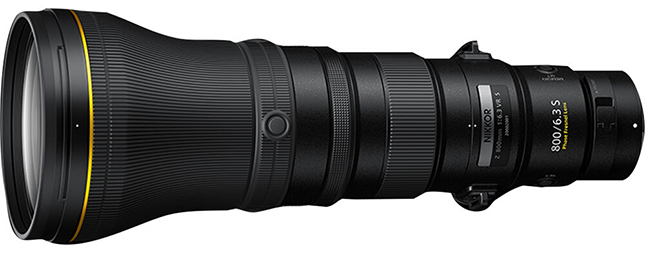
Fujifilm has promised us a GF 20-35mm ultra-wide-angle zoom lens, which is very exciting. But perhaps GFX users are looking even more forward to the first GF tilt-shift lens, although that’s not slated to arrive until 2023. I’m not sure what Canon has in the pipeline for the RF system, but I imagine they’ll release something incredible in 2022. Canon’s optics always impress and I think that there’s still more room for their talented engineers to push lens design forward with the RF mount. Sony released a ton of amazing lenses this year and there’s no reason not to expect more of the same next year. I don’t want to leave anyone out, so I’ll just finish my spiel by saying that I’m looking forward to new glass from everyone. We’ve been spoiled with great lenses in 2021 and there’s every reason to expect more and better in 2022.
DE: That’s a great point, Jeremy - it’s been kind of a quiet revolution, but advances in lens technology have been every bit as dramatic as those for cameras. Lens improvements aren’t as obvious as the difference between 10 and 30 fps, but there have been huge developments in lens design and manufacturing over the last five years or so. A lot of people don’t realize just how much better modern lenses are than even excellent ones from, say, 10 years ago. Even over the last five years there have been dramatic advances in things like coatings, glass formulations and aspheric molding tech that have given lens designers options they never could have dreamed of before. Taking just coatings as one example, look at optical diagrams of lenses from 5 or 10 years ago and compare them with ones for modern lenses. These days, it’s common to see lenses with 15, 17 or even 20-plus elements in them. If a 2010-era lens designer had tried to pull off something like that, the lens would have been a foggy, flare-y mess. The fact that modern anti-reflection coatings have gotten so incredibly good means that designers can stack elements to their heart’s content without worrying about flare and poor contrast.
WP: Like you guys, I’m also excited by what’s happening in lenses, and more specifically, seeing Canon and Nikon catch up to Sony in terms of the range of lenses available for their full-frame mirrorless systems. Sony had the clear lead in this regard, and it’s taken Nikon the longest to build out their system, especially on the super-tele end of the range. I’m sort of stumped by some of Nikon’s lens introduction priorities for the Z system. For example, I don’t really get the recently-announced 28-75mm F2.8 when the lineup already had an exceptional 24-70mm F2.8 S and a very compact 24-70mm F4 S, while tele shooters continue to wait on fast, long primes. The Nikon 100-400mm was just introduced late this year. To my mind that would have been one of the key lenses to develop sooner. Better late than never, though, and I think 2022 will see the three majors coming into closer parity in terms of the maturity and depth of their full-frame mirrorless systems.
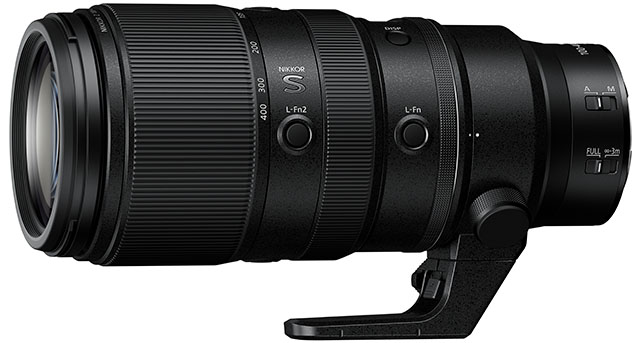
DE: Playing off my note above about rapidly advancing lens tech, it could actually be an advantage that more of Nikon and Canon’s mirrorless lens designs are more recent, and so able to take advantage of more advanced tech. We’ve seen Sony start to release version II of many of their lenses; I think we’re going to see a lot of that from them over the next year or two, to leverage newly-developed technology. (One of the biggest advances in just the last 2-3 years has been the ability to create aspheric lenses with much more extreme cross-sections. Sony refers to their version as “extreme aspheric”, and they’ve highlighted it in some of their most recent releases. We’re going to see a lot more of that from everyone…)
WB: On the lens front, I too am very curious to see what new glass comes out for both Canon RF and Nikon Z mount, especially regarding supertelephoto lenses. The recently-announced Nikon 800mm Z lens is quite exciting. I can't wait to see that lens and get hands-on with that one. Similarly, I'm curious about the Fujifilm GF system lenses. I've not shot with the GF system nearly as much as my colleague Jeremy has, but I am curious to see if they have anything coming down the line in terms of telephoto lenses. For medium-format, those are bound to be big, heavy and expensive lenses, but it's an area where their lineup is the weakest. And given how versatile their GFX 100 and GFX 100S cameras are, I'm hopeful that some new lenses will help take the GF medium-format system into even more new territories.

DE: Yeah, that Nikkor 800mm F6.3 looks very interesting! I remember how impressed we were with the Nikkor 500mm F5.6 PF. It was almost unbelievably light, thanks to the PF (Phase Fresnel) lens technology in it. And while it isn’t exactly cheap at ~$3,300, it’s a screaming bargain compared to wider-aperture lenses of the same focal length. I don’t know how well it’s sold, but my guess is it’s been very successful for Nikon. Like you, I can’t wait to get my hands on the 800mm version!
JG: Just to jump in here, the Nikon 500mm F5.6 PF proved to be very popular. It was hard to get for well over a year after its release. It’s one of my favorite lenses Nikon has ever released. After testing it, it was hard to go back to heavy telephoto lenses. I hope the Z 800mm F6.3 is more of the same.
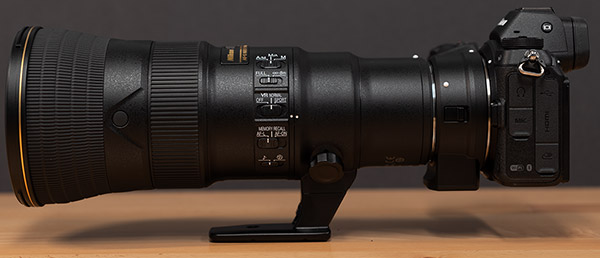
WP: Maybe the brand I’m most curious about in 2022 is OM Digital (formerly Olympus). They’ve been through a lot of changes lately but for wildlife photographers in particular, there are some distinct advantages with the OM-D system when it comes to telephoto photography. The M.Zuiko 300mm F4, as a 600mm equivalent at a fraction of the cost, size and weight, is super compelling for wildlife shooters, especially those that don’t feel the need for full-frame sensors. They’ve teased a new camera coming soon under the OM Digital brand.
WB: Yes, thank you Wes for bringing up OM Digital! I was just about to mention them! I'm really excited to see what's in store for them in the next year. They are one of my favorite camera platforms when it comes to birding and wildlife photography. Rumors are indeed starting to ramp up about a forthcoming flagship camera from OM Digital, so I'm super curious to see what they have coming. I have my fingers crossed that we see a new camera with a new sensor; not one that's necessarily higher-resolution than the 20MP sensor they've used in several cameras, but something new nonetheless.
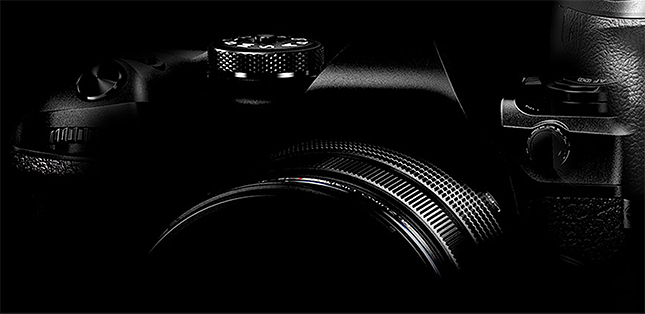
DE: Hah, Wes (and William), you beat me to it again! Yeah, of anything else across the board, I’m most curious about what OM Digital has in store. They’ve carved out a unique place in the market for themselves, and have stuck to it faithfully. The combination of compact size, light weight, superb weather sealing and great IS make them an easy choice for anyone needing to lug a bag of gear for any distance or duration, and especially for people who need to shoot no matter what the weather. Even before the name change, Olympus was talking about a forthcoming “WOW” camera. We know almost nothing about it other than “trust us, it’s gonna be incredible”, but I’m very much looking forward to seeing it. Olympus was absolutely the breakthrough leader with AI-based AF, in the form of their E-M1X camera.
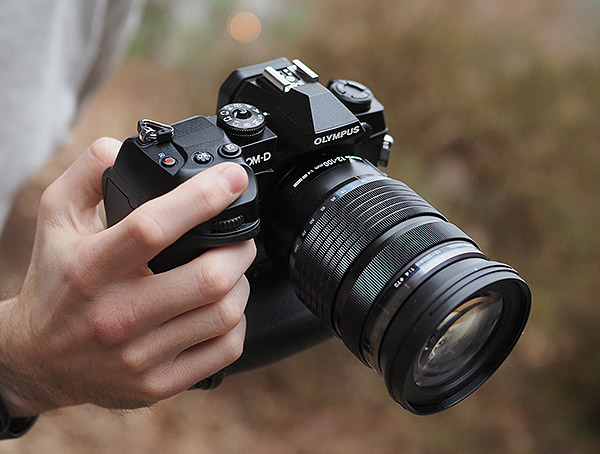
Since then, everyone seems to have gotten into the AI-AF game, but Olympus was the first by a good margin. I expect that to translate to an edge over others in their upcoming models. The tech and algorithms were very new in the E-M1X, so they took the approach of using a lot of conventional CPU cores to execute the processing for it, rather than dedicated neural-net (NN) hardware. In an interview at the time, their engineering leader for AF told me that they went with a general-purpose CPU architecture because they didn’t want to lock in on specific NN hardware too early, while they were still evolving the algorithms. The E-M1X was released way back in early 2019, so by the time the “WOW” camera arrives, they’ll have had no less than 3 years to advance their technology. Also, even back in 2019, the E-M1X could shoot full resolution with full AE/AF tracking at 18fps, and the E-M1 III can go as high as 60fps, albeit without live AF. I think we’re going to see some very impressive speed and AF performance from their coming flagship model.
DH: I’d like to see what happens with medium format. Fujifilm dominated in 2021 with the GFX 100S which, like the A1, is a camera that stole just about every photo industry headline early in the year. But what comes next? I’ll always have an affection for medium format but aside from all the noise Fujifilm has made recently, I’m wondering how much of a future it has? Ryan Hill of Lensrentals wrote an excellent article for us titled “Do You Really Need a Medium Format Camera?” in October and while it’s a bit of a provocative title, it’s a fair question I think. At the same time, sensor size is still a key differentiating factor and as Sony goes against Canon and against Nikon in the full-frame mirrorless world, Fujifilm and other medium format manufacturers can still say: “But hey, we’ve got bigger sensors!” It could be a simple but strong selling point if manufacturers are still willing to invest in the medium format space. They might not be.
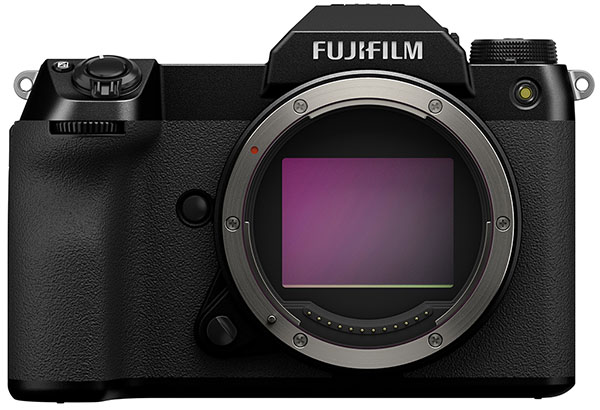
WP: Medium format is an interesting segment. Hasselblad looked like it would be a strong player here with the X1D series, but it’s been quiet as of late. Not sure if that has something to do with DJI’s investment in the company; perhaps things are in the works. It’s worth noting though that this is such a niche market, and the Sony A1’s Pixel Shift Multi Shooting mode can composite up to 16 frames into a massive 199-megapixel file. Other cameras, including some from OM Digital can do something similar. So I’m just not sure how important medium format options are for most photographers, particularly when the lens options for these cameras are very limited in comparison to full-frame sensor systems.
DE: The price/performance ratio of Fuji’s models has to be making it very hard for others to compete in medium format. At only $6K for a 100-megapixel camera, the GFX 100S is tough to beat, and Fuji’s lens quality is absolutely second to none. (Interesting factoid: Years back, when the GF had just been announced, I got to interview some of Fuji’s lens designers. They told me then that all the GF lenses from the very beginning were designed to resolve to a 100 MP level, because that’s where the line was headed. Also, a slightly different design philosophy leads to Fuji’s glass tending to be sharper at optimum focus than other makers’ lenses.) All that is just to say that I wouldn’t want to be in Hassleblad’s or Phase One’s shoes right now. There are certainly still some niches where you can make a case for MF cameras from either of those manufacturers, but I see Fuji as completely dominating the vast bulk of that market.
WP: To sum up for me, it’s a pretty exciting time for photographers in terms of equipment options. The Sony A1, Nikon Z9 and Canon EOS R3 are all incredible cameras. Pricey, yes, but amazingly capable. Digital photography has matured to the point where a camera investment can last a relatively long time, especially if you’re choosing one of the top-tier models, but even for more affordable cameras. I thought it was interesting that Imaging Resource readers chose the Pentax K-3 Mark III for third place in the Reader’s Choice Camera of the Year awards. That an APS-C DSLR still resonates with a lot of folks shows that cutting edge, full-frame mirrorless gear isn’t the only equipment that excites photographers.
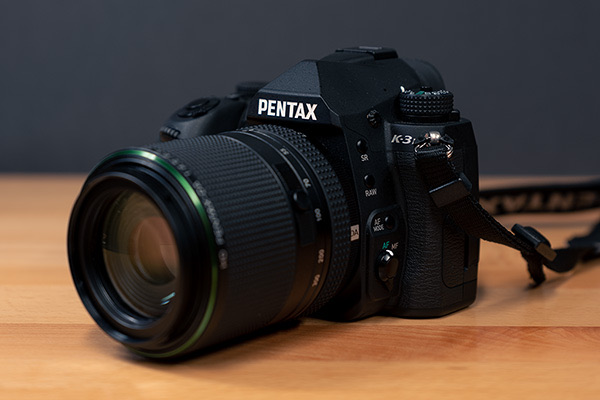
DH: If you told me prior to 2021 that just one of these cameras -- the Sony A1, Fujifilm GFX 100S, Canon EOS R3 or Nikon Z9 -- would be released in the year, I would’ve been impressed. The fact that all four were introduced in 2021 is kind of incredible.
WB: Agreed there, Dan. 2021 was certainly a year of incredible cameras! Pricey ones, too! I'm glad Sony also managed to squeeze in the A7 IV this year, as well. Something more affordable, and more attainable to a wider range of photographers and creators. While I love to get hands-on with the highest-end, flagship models, at the same time, I love to see how these technologies and high-end features make their way down into intermediate-level and enthusiast-level cameras. So, the A7 IV is really exciting to me, for instance. Again, I'm also super excited to see what's next with OM Digital, as well as what's next with the Fujifilm X Series. What's next beyond the Fujifilm X-T4, for example?
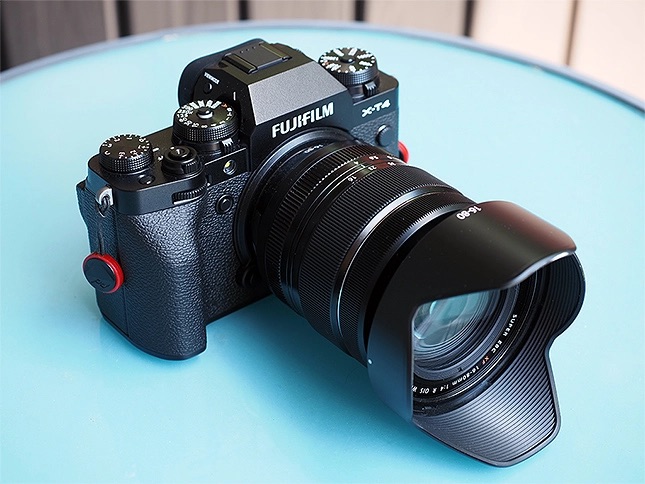
JG: Fujifilm has done an amazing job carving out two niches with the GFX and X systems. Fujifilm stated in September that 2022 will introduce a brand-new stacked backside-illuminated X-Trans image sensor and I’m very much looking forward to seeing what sort of image quality, AF and speed that Fujifilm can squeeze out of the APS-C sensor size. As Dave has written about before, the X-Trans sensor design is unique and it offers interesting advantages, although often at the cost of higher processing requirements. The move to a stacked sensor, plus the general advancement of processing technology, could pay huge dividends for the Fujifilm X system in 2022 and beyond.

And speaking of unique sensor technology, will we finally see Sigma’s next Foveon sensor in 2022? The company has unfortunately run into issues with that project, but I’m crossing my fingers that 2022 will be a good one for Sigma. They work hard to create distinct products and I’d really like to see a full-frame Foveon camera hit the market.
DE: I agree with everyone on all points! Good question, William, about what will follow the X-T4. I love Fuji’s cameras, especially their absolutely unique Film Simulation modes. And good point Jeremy, about Sigma’s Foveon tech. I agree about how hard they work to come up with unique products. Whether cameras or lenses, Sigma is a huge asset for photographers of every stripe, worldwide; I’m rooting hard for them over the long haul.
At the end of the day, besides whatever OM Digital will come out with next year, what I’m most looking forward to is for the advanced tech of 2021’s "Fabulous Four" to make its way to lower-end models. It won’t be next year, but I can see the day coming when the average parent has tech on the level of the A1, R3 or Z9 to shoot their kids’ soccer games with. I say it every year, but there’s truly never been a better time in history to be a photographer!
